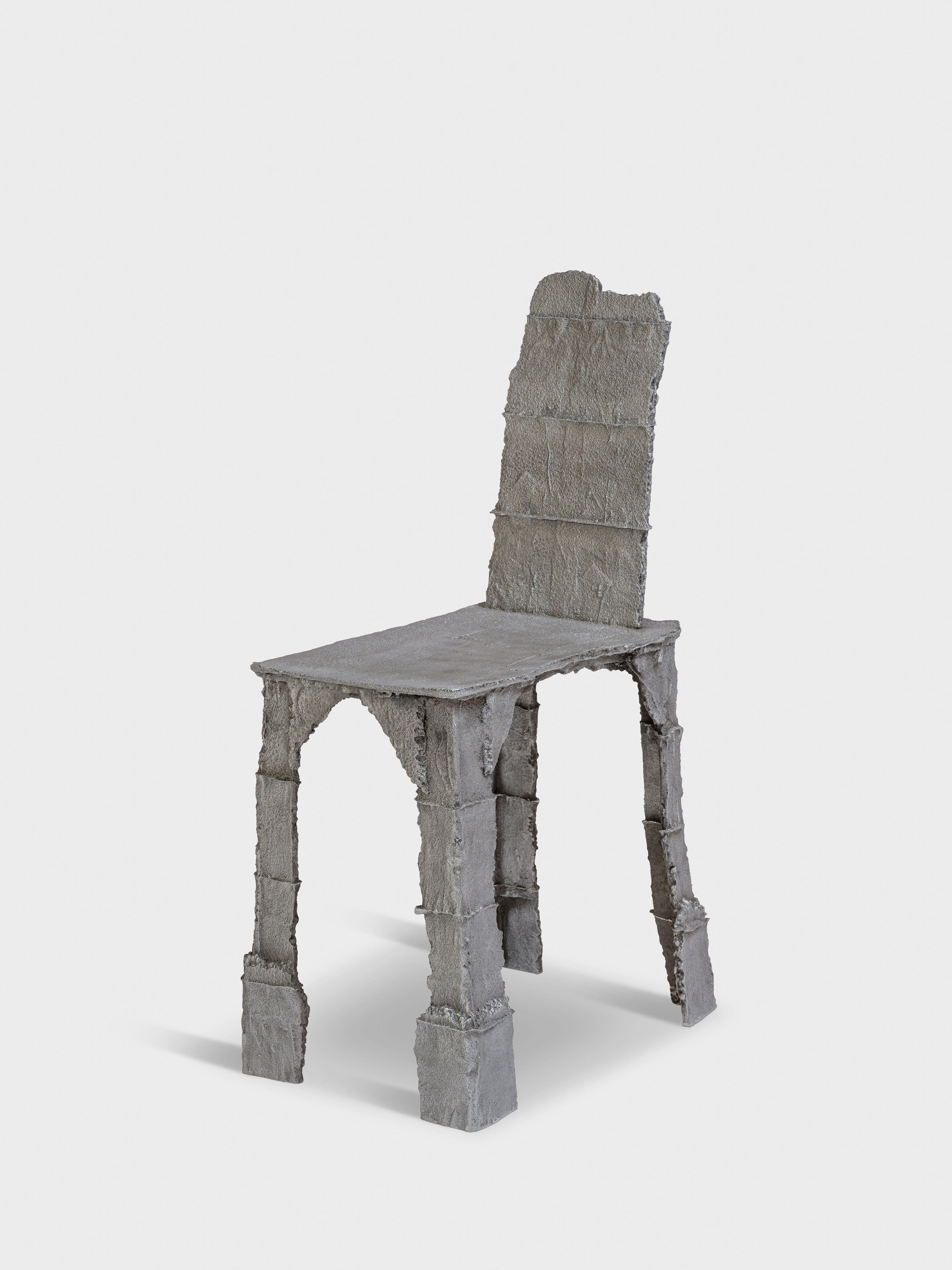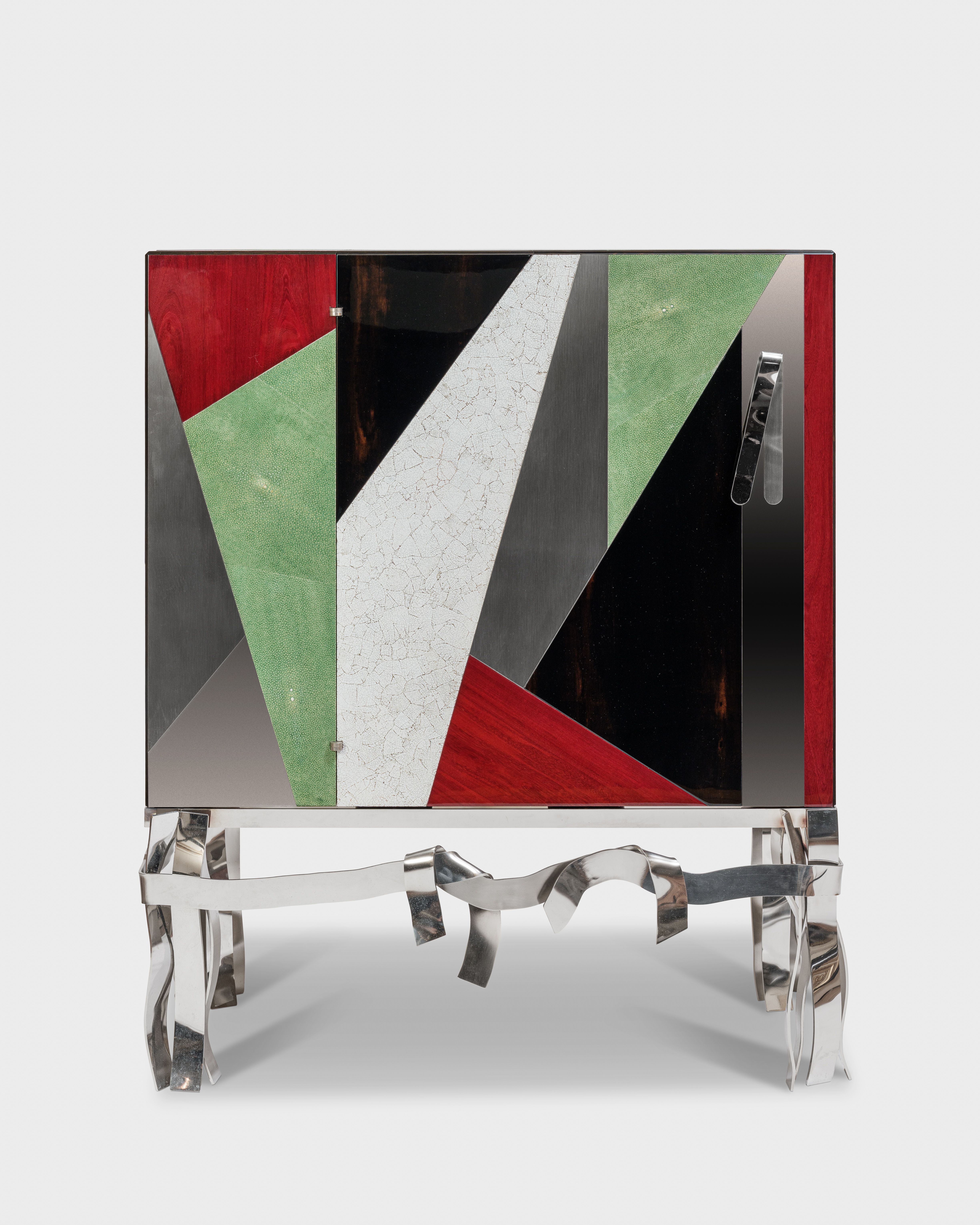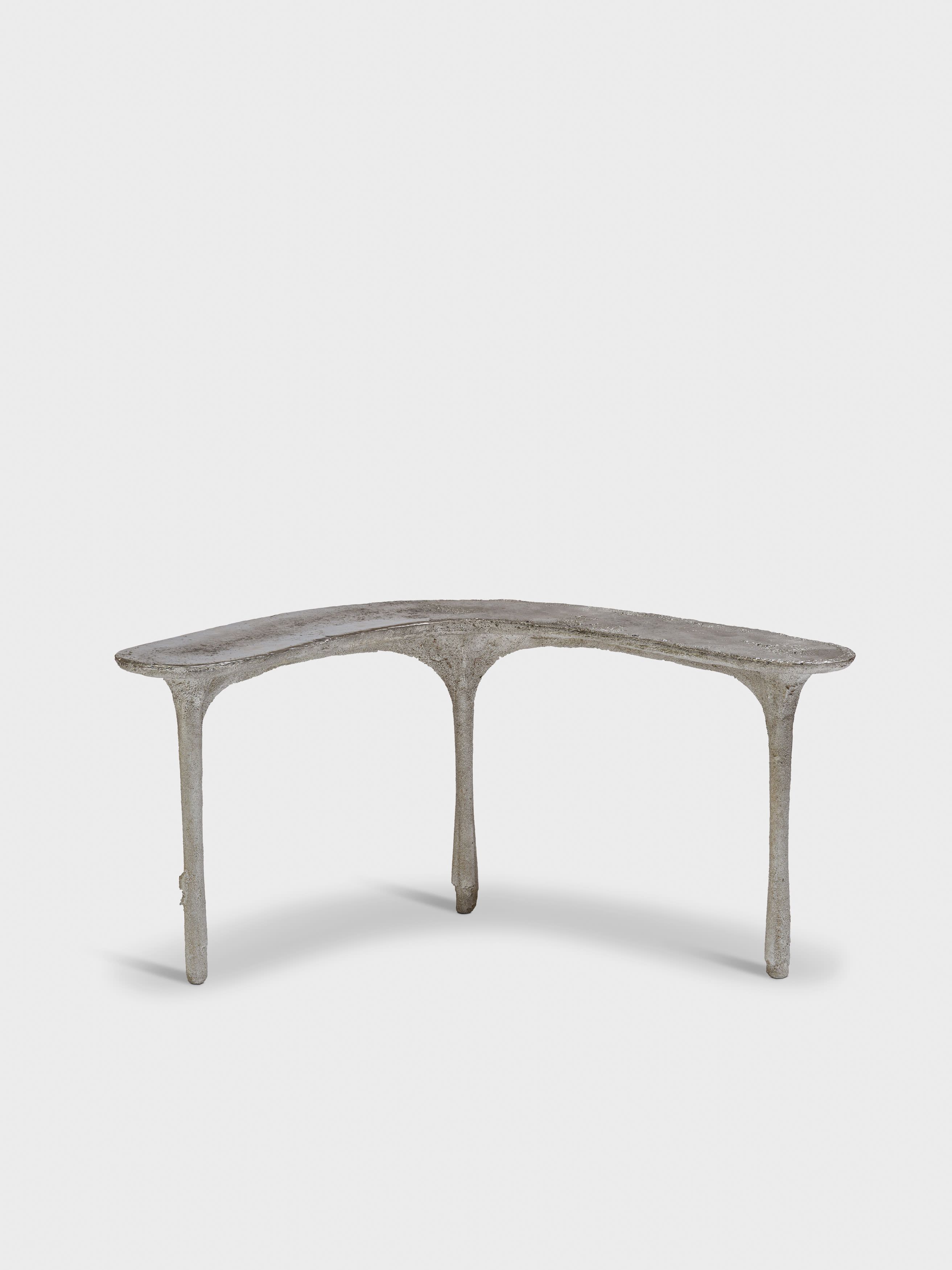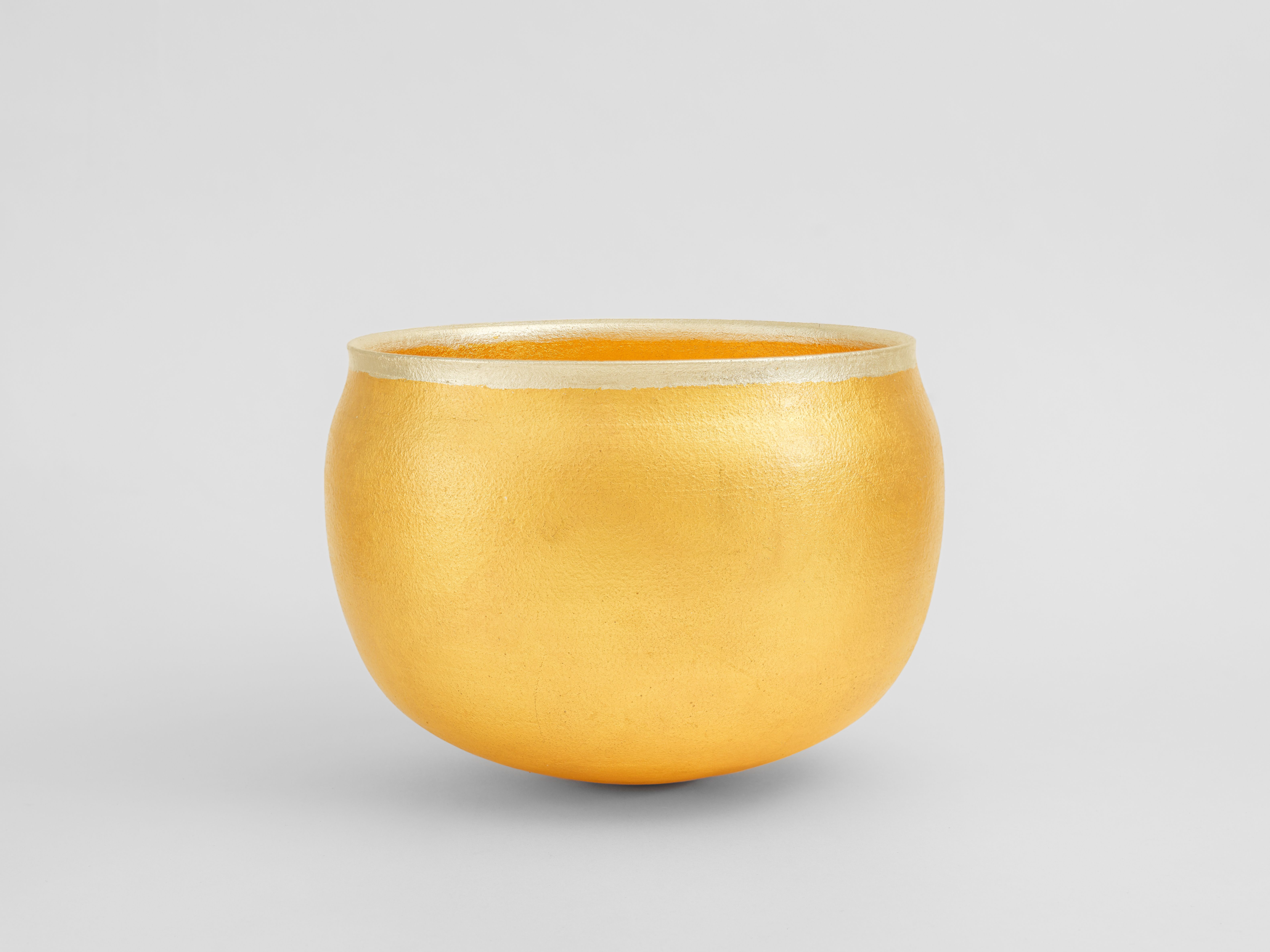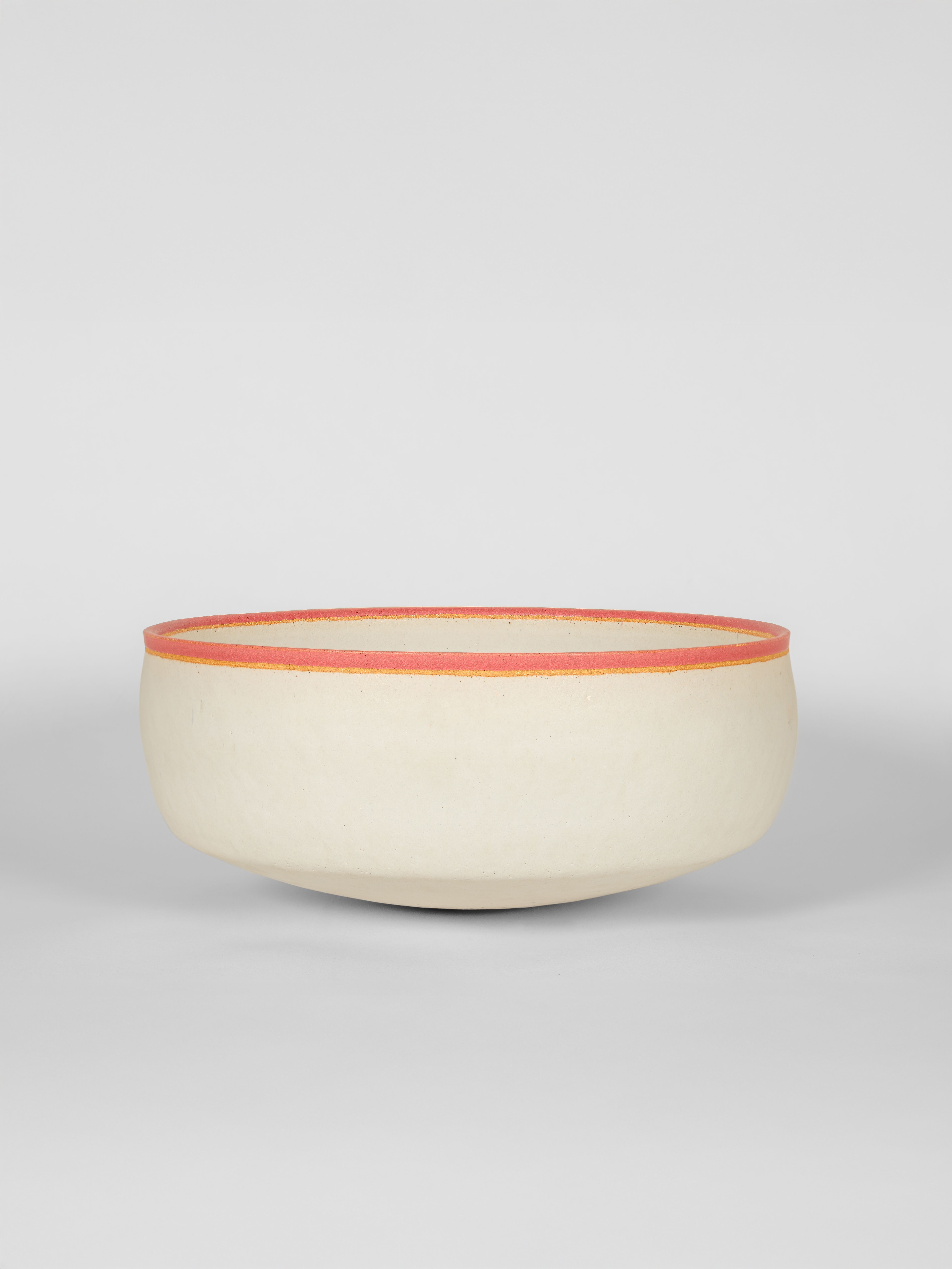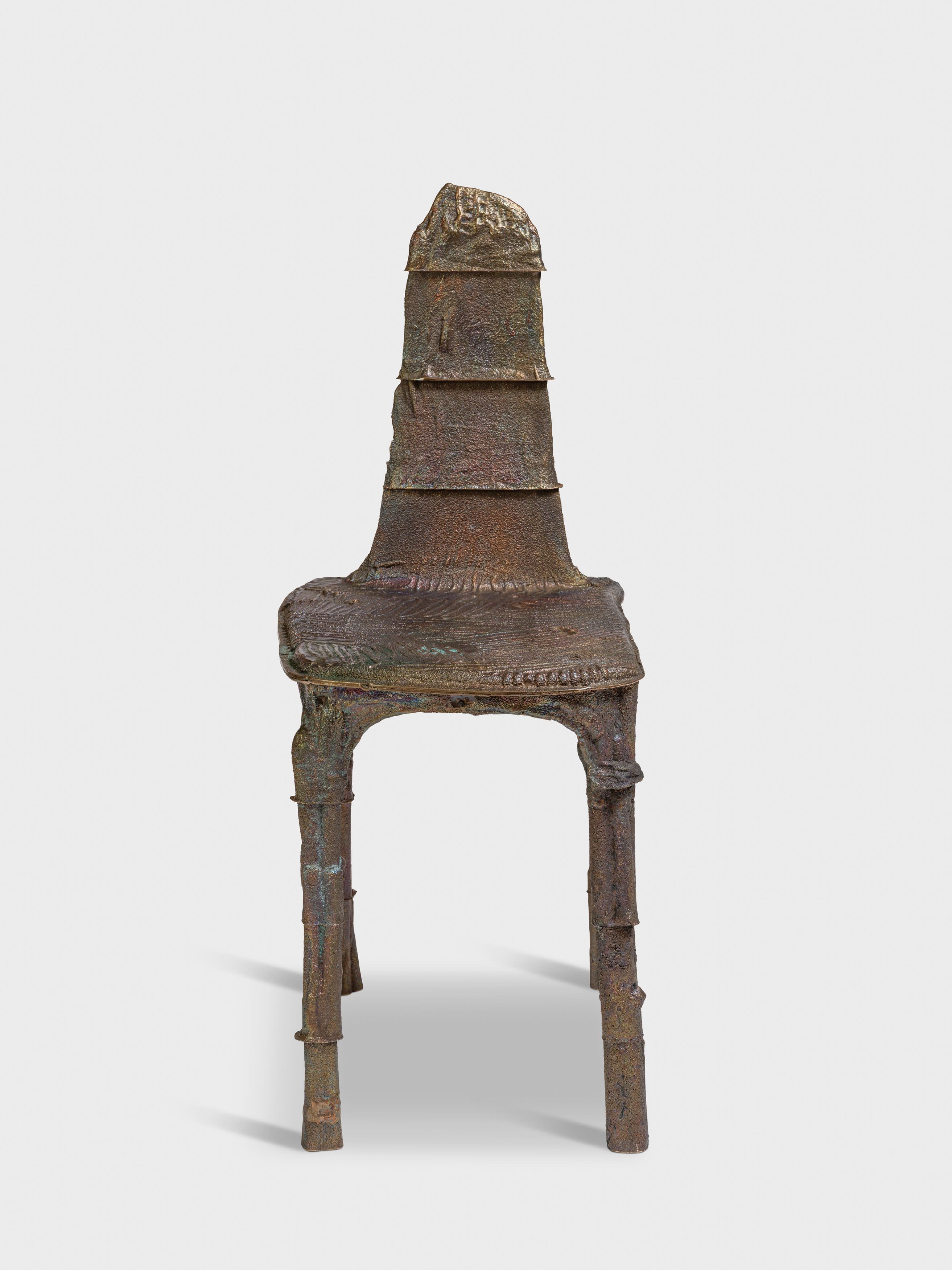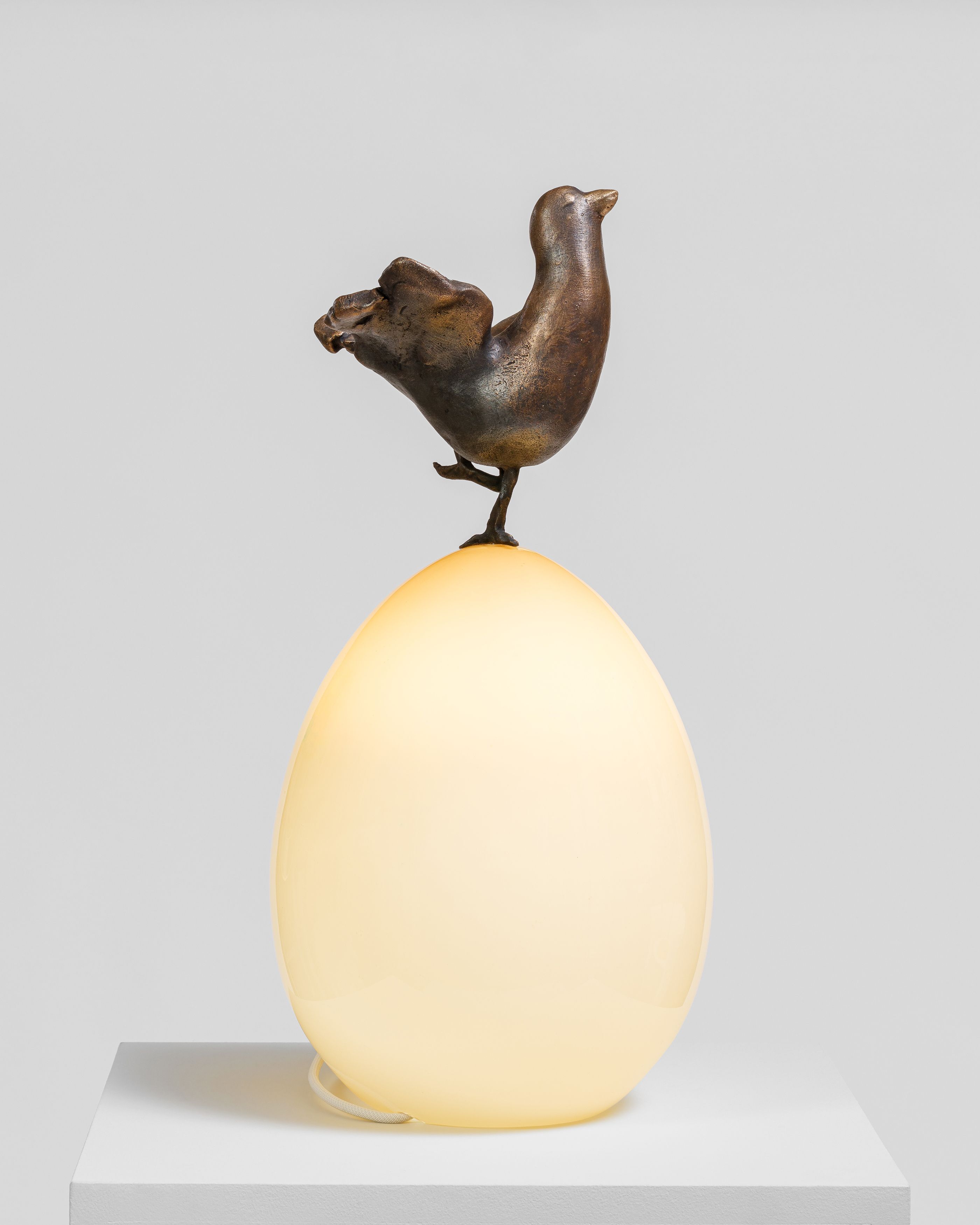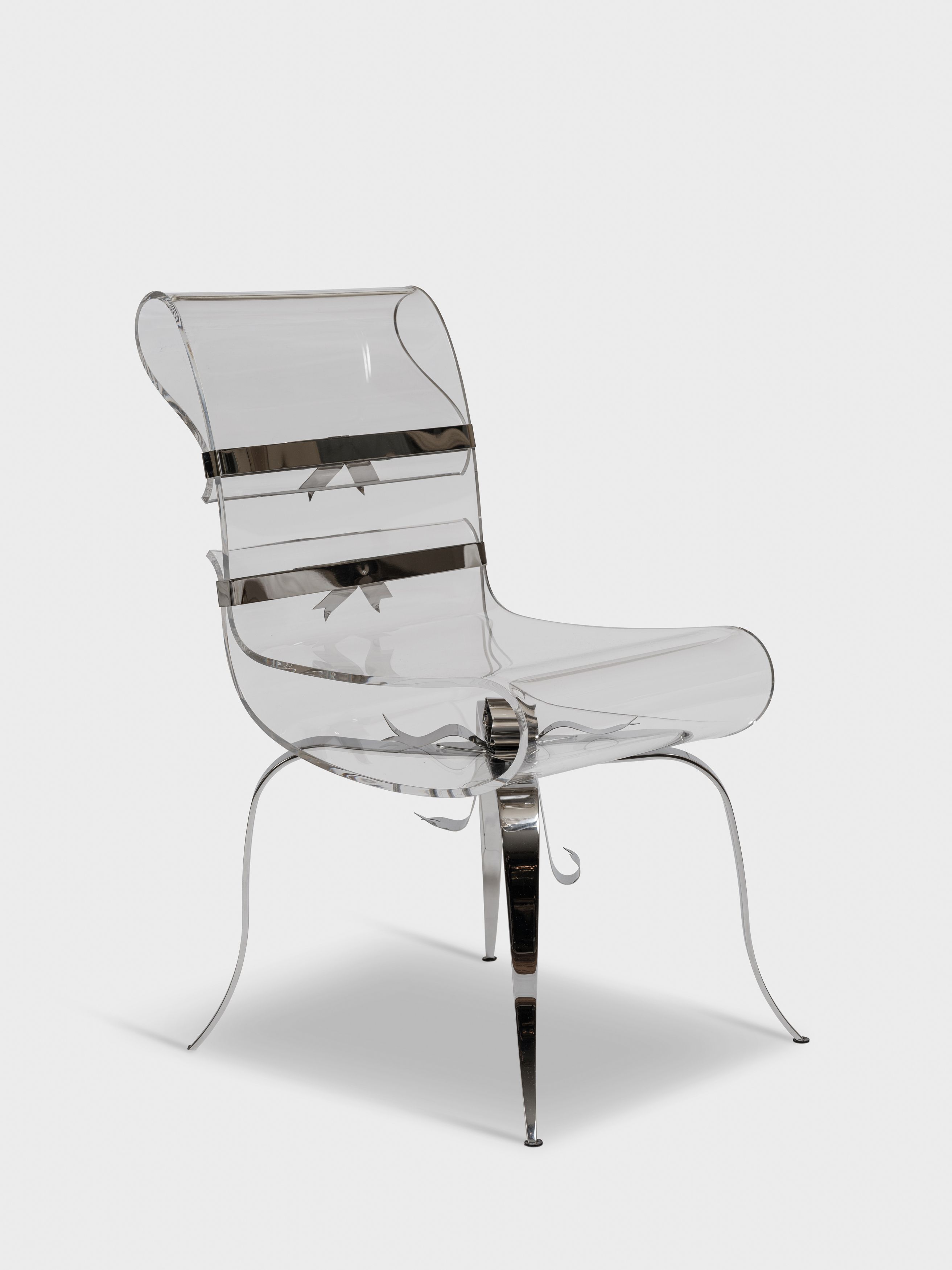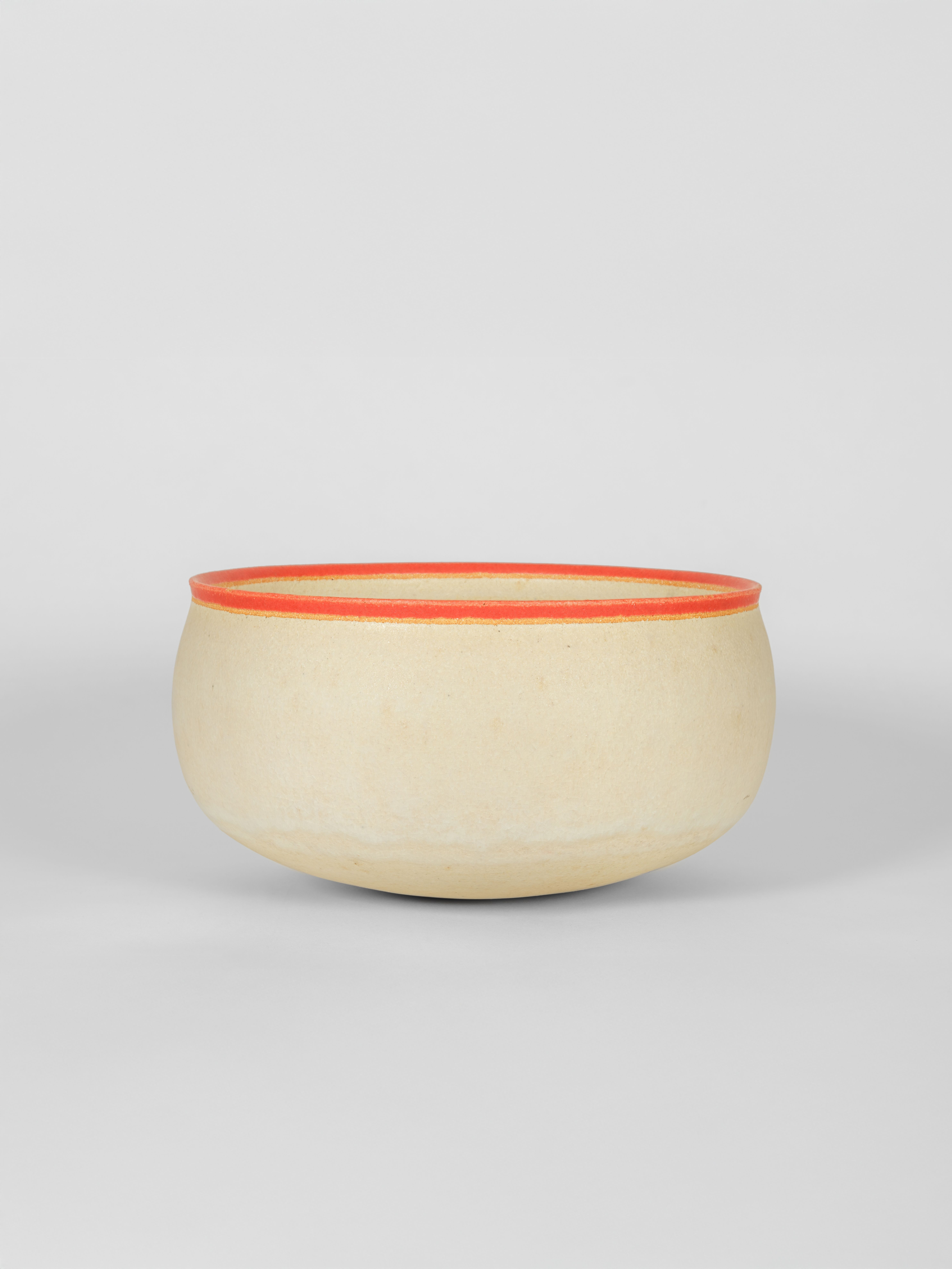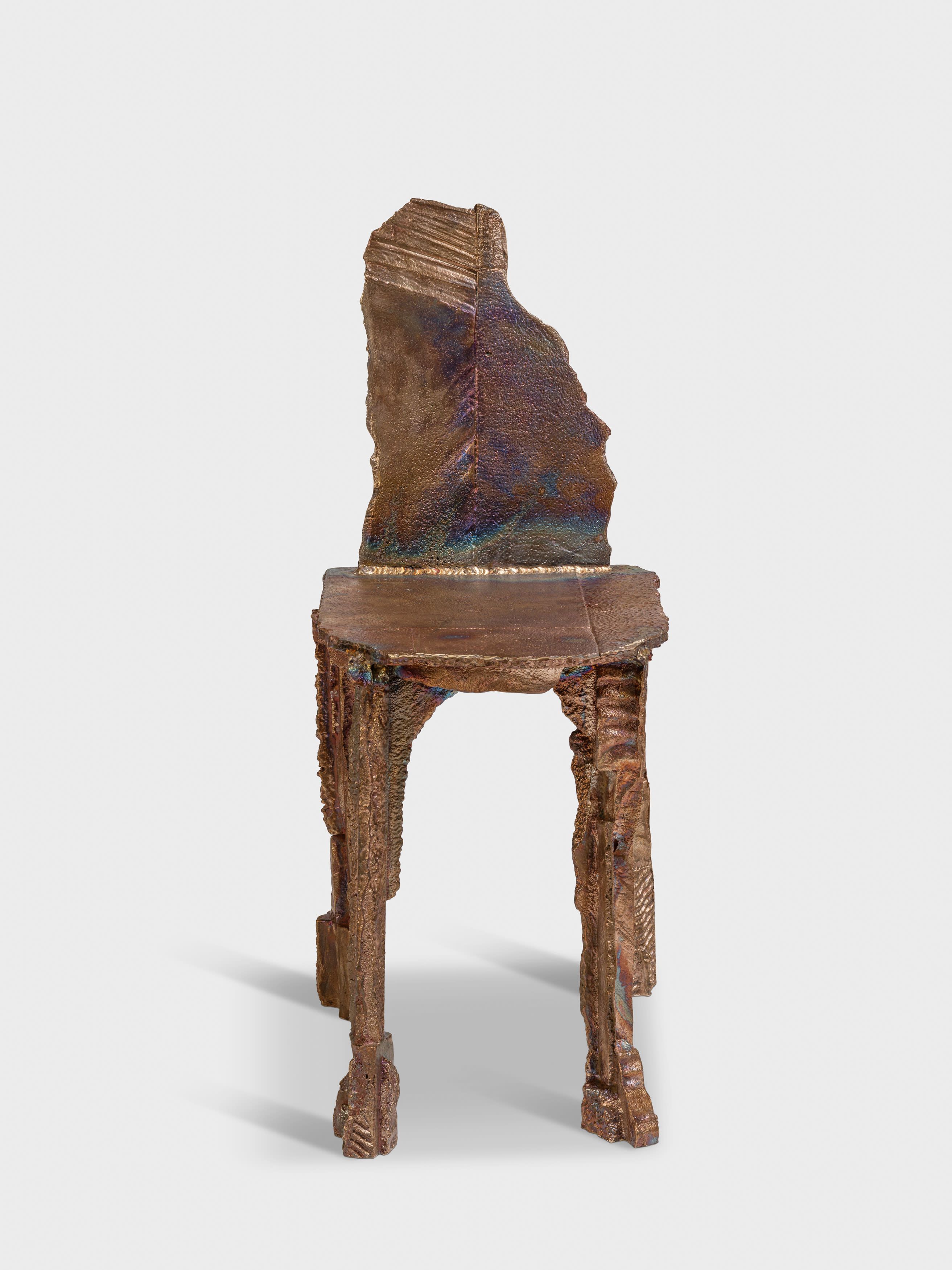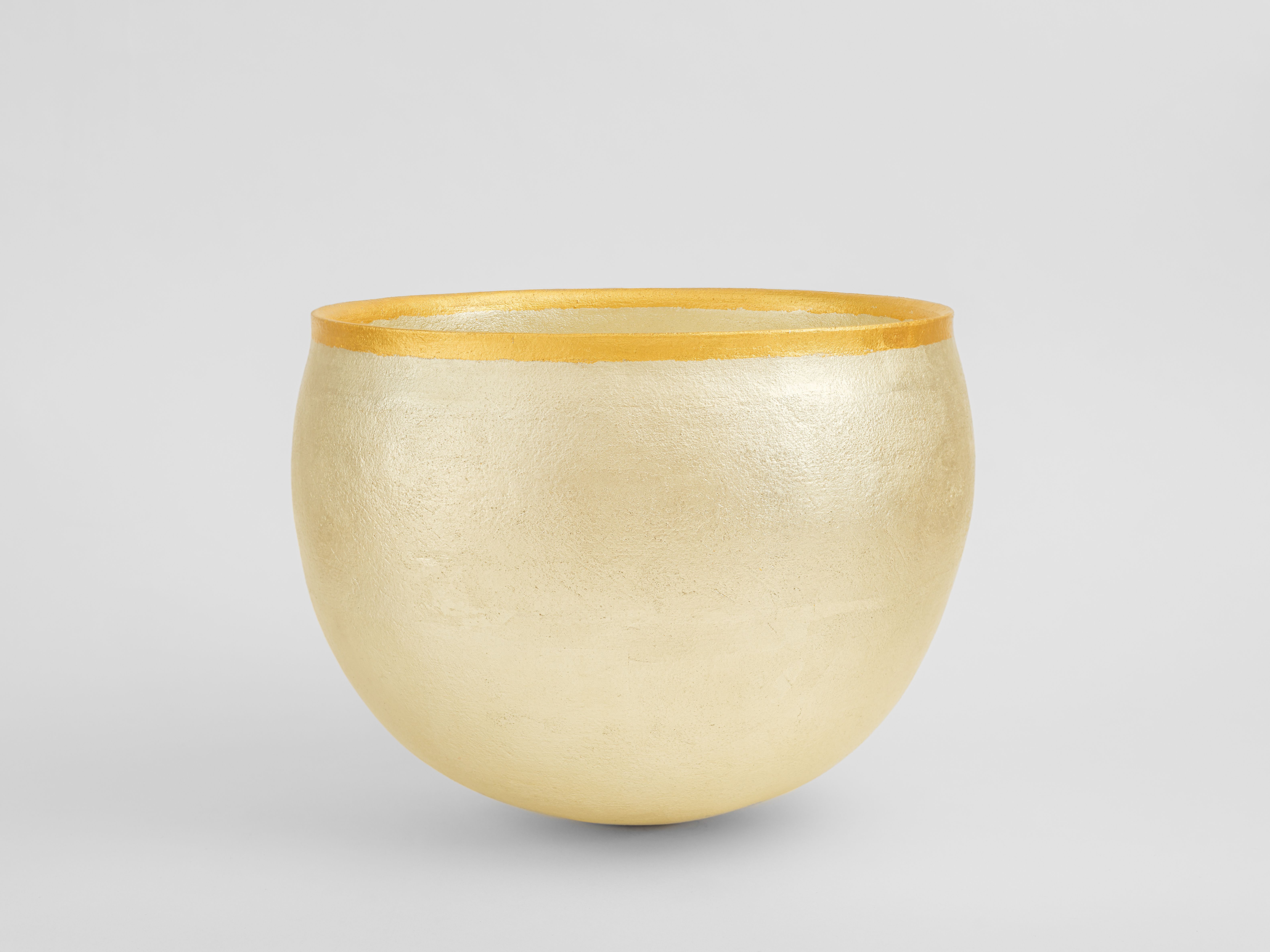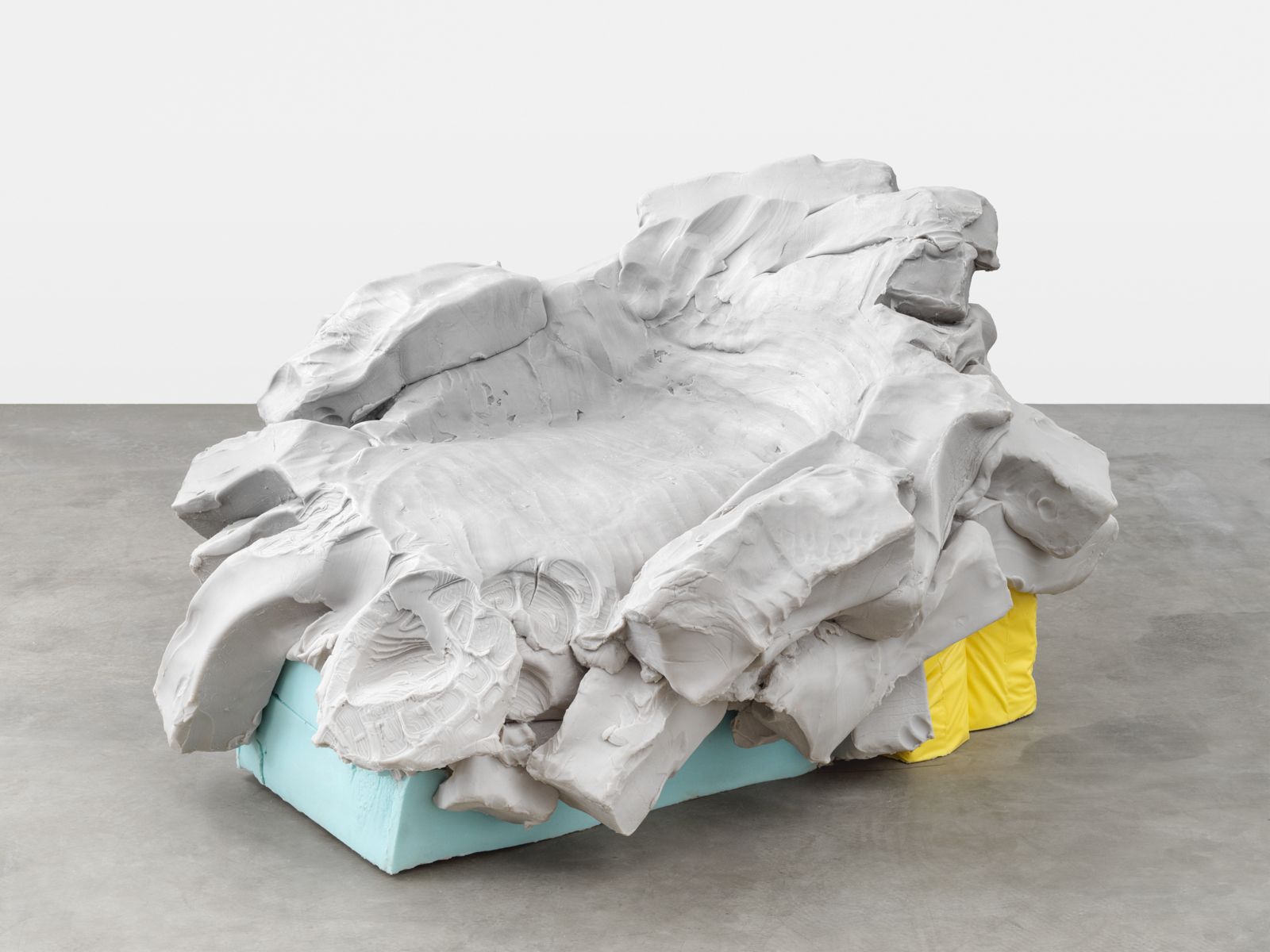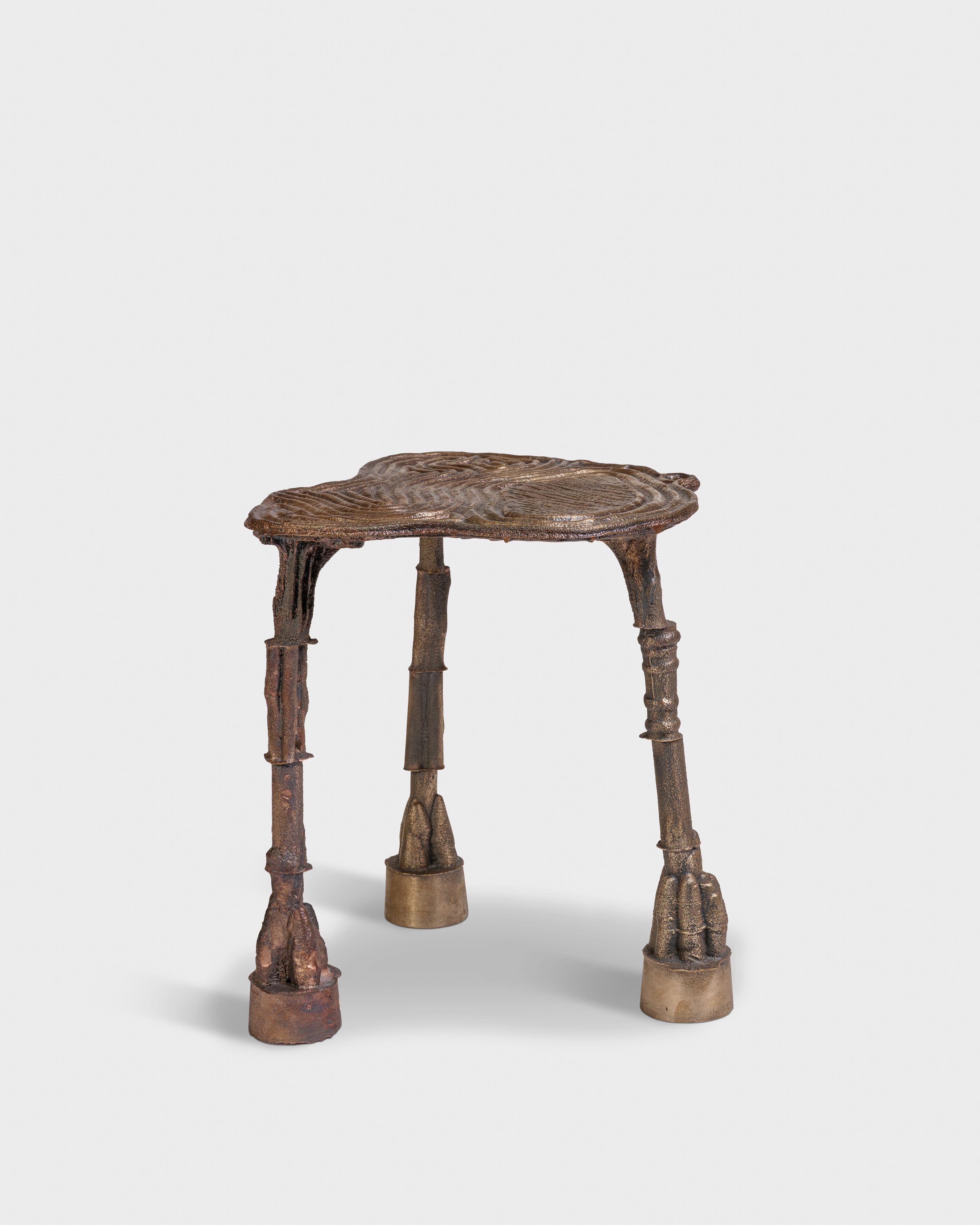
Design Miami. Paris 2025
Installation Views
Artwork
Salon 94 Design is pleased to participate in Design Miami Paris for our third consecutive year at the Hotel de Maisons. Our booth will feature functional design by Urs Fischer, new bronze and aluminum cast chairs by Max Lamb, vintage and editioned furniture by Maria Pergay in collaboration with Demisch Danant, and new ceramics by Paris-based artist Alev Ebüzziya Siesbye. In an inaugural presentation for a new award, Duyi Han will have a mirror on display.
Maria Pergay (b.1930, d. 2023) began her career in the 1950s, designing ornate metal elements for the window displays of Parisian boutiques including Christian Dior and Pierre Cardin. With her creativity piqued, she began experimenting with silver and soon produced a full collection of contemporary objects. The collection’s formal originality and expressive individuality set the tone for a lifelong refusal to conform to trends or commercial expectations. This silver work also served as a catalyst for her groundbreaking experiments in stainless steel—an industrial material she would transform into her signature medium.
Alev Ebüzziya Siesbye (b. 1938) will present 5 new bowls in varying colors and materials. Working with the ancient coiling technique and a traditional wooden kick wheel, Ebüzziya Siesbye creates vessels that bear the intimate marks of her hand, balancing density and spaciousness, firmness and fragility. Fired at high temperatures, her bowls possess a stone-like solidity, while their sharp-edged lips and small, recessed bases lend them an impression of levitation. Though often unadorned, some pieces feature delicate horizontal lines along the rim to, as the artist describes, “prevent them from lifting off the ground.”
Two new bodies of work represent an evolution in Max Lamb's (b. 1980) exploration of sand casting. The first employs lost-polystyrene casting with aluminium and bronze, forming chairs from scrap polystyrene saved over the years—not even the tiny crumbs the size of a finger are thrown out. Where the Bronze Poly series began with pristine blocks of low-density expanded polystyrene that Lamb carved by hand, these chairs embrace a constructive rather than subtractive approach. He assembles salvaged polystyrene blocks and offcuts into sculptural forms, stacking and arranging them to create chairs of substantial presence and geometric clarity. The scrap pieces retain their original edges and joints, which become integral to each chair's history.
The second body of work returns to the directness of Lamb's earliest experiments—carving negative space into sand to create molds for chairs and stools. Where his 2006 Pewter Stool was carved into the compacted beach sand, these new pieces use the dense sand blocks provided by the foundry industry itself. Lamb excavates seats and backs, and legs directly into this industrial casting medium, transforming the very material meant to hold molds into the mold itself, then pours molten metal into the carved voids.
Urs Fischer (b. 1973) is a Swiss contemporary artist whose characteristically unpredictable practice spans sculpture, installation, painting and photography. His work ranges from minuscule curiosities to monumental installations that engage in a dynamic dialogue with their surroundings— natural landscapes, urban architecture, and institutional spaces alike. His approach is characterized by an omnivorous visual, material, and technical approach that places emphasis on reinvention, relying on a set of influences so varied that the carpentry he once learned from his father often unexpectedly dovetails with with his studies in photography— it’s a question of subverted expectations, humor, and an elevation of the banal. Variations on recurring themes (chairs, birds, bodies, mirrors, raindrops, food, and holes feature prominently) figure heavily his practice, yielding a body of work set firmly in oppositions—thesis and antithesis—that manifests as an interplay between construction and deconstruction, permanence and impermanence.
